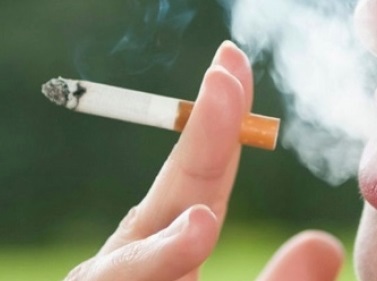
By, Dr. Pavan Yadav
Chronic obstructive pulmonary disease (COPD) is the fourth leading cause of death worldwide, causing 3.5 million deaths in 2021, approximately 5% of all global deaths. Nearly 90% of COPD deaths in those under 70 years of age occur in low- and middle-income countries (LMIC)
Chronic Obstructive Pulmonary Disease (COPD) is a serious, life-altering condition that affects millions worldwide, particularly in regions where smoking rates are high. While genetic and environmental factors can contribute to the development of COPD, smoking remains the primary cause. As a progressive lung disease that encompasses chronic bronchitis and emphysema, COPD gradually impairs one’s ability to breathe and severely limits daily life. For those who smoke or are exposed to secondhand smoke, understanding the severe implications of this habit is crucial—not only for personal health but for those around them.
The Basics: What is COPD?
COPD is a chronic disease marked by persistent respiratory symptoms and airflow limitations. It is most commonly caused by exposure to harmful particles or gases, with tobacco smoke being the leading contributor. The disease is progressive, meaning it worsens over time, and is often diagnosed after a significant reduction in lung function, typically in middle-aged or older adults. COPD encompasses two primary conditions:
1. Chronic Bronchitis: This form is characterised by inflammation of the bronchial tubes and chronic cough with mucus production.
2. Emphysema: In this form, the air sacs (alveoli) in the lungs are damaged, reducing the lungs’ capacity to transport oxygen to the bloodstream effectively.
Both conditions lead to increased shortness of breath, fatigue, and a decreased ability to perform routine tasks, severely affecting the quality of life.
How Does Smoking Cause COPD?
1. Direct Damage to Lung Tissue
Tobacco smoke contains a mix of thousands of chemicals, including tar, nicotine, carbon monoxide, and numerous carcinogens. These compounds inflict immediate and long-term damage to lung tissues. Every inhalation of cigarette smoke harms the cells lining the respiratory tract, which over time leads to chronic inflammation and irreversible tissue damage.
2. Destruction of Cilia and Mucus Overproduction
The lungs have small, hair-like structures called cilia that help keep the airways clear of mucus and contaminants. Smoking paralyses and damages these cilia, making it difficult for the lungs to clear out mucus and leading to mucus buildup. As a result, individuals are more susceptible to infections and respiratory issues, exacerbating COPD symptoms.
3. Inflammation and Narrowing of the Airways
The chemicals in cigarette smoke trigger an inflammatory response in the lungs. Over time, this inflammation thickens and scars the airway walls, narrowing them and making it increasingly difficult for air to flow in and out. This narrowing is central to the shortness of breath and wheezing commonly associated with COPD.
4. Emphysematous Changes
In emphysema, the alveoli—the small air sacs that facilitate oxygen exchange—are destroyed. Smoking accelerates the breakdown of these air sacs, which decreases lung elasticity and makes it harder to exhale fully. As a result, stale air becomes trapped in the lungs, leading to a feeling of constant breathlessness.
The Impact of Smoking-Related COPD on Health and Life Quality
The onset of COPD leads to a cascade of health issues, significantly impacting quality of life and longevity. Here are some of the critical ways COPD affects individuals:
1. Breathlessness and Fatigue: As lung function declines, individuals experience breathlessness even during basic activities. This constant struggle for breath is exhausting, leading to persistent fatigue and reduced activity levels.
2. Frequent Respiratory Infections: Those with COPD are at increased risk of infections such as pneumonia and bronchitis. Each infection can exacerbate COPD symptoms, leading to further lung damage and hospitalisation.
3. Increased Risk of Comorbidities: COPD is often accompanied by other health issues, including cardiovascular disease, diabetes, osteoporosis, and depression. These comorbidities complicate treatment and worsen the prognosis.
4. Decreased Life Expectancy: The impact of COPD on longevity is significant, with the disease shortening life expectancy by several years, especially when smoking continues after diagnosis. The progressive nature of COPD means that individuals often face a deteriorating quality of life and increased dependency on others.
The Secondhand Smoke Threat
It is essential to highlight that even non-smokers are at risk of COPD when exposed to secondhand smoke. Breathing in another person’s cigarette smoke exposes individuals to the same toxic chemicals, leading to similar lung damage over time. This risk is particularly concerning for children, who, when exposed to secondhand smoke, are at increased risk of respiratory illnesses and chronic lung conditions later in life.
The Benefits of Quitting: A Path to Better Health
For those who quit smoking, the positive effects are almost immediate:
· Within 20 minutes: Heart rate and blood pressure begin to normalise.
· Within a few hours: Carbon monoxide levels in the blood drop, improving oxygen levels.
· Within weeks to months: Lung function improves, and cilia begin to regrow, enhancing the ability to clear mucus and reduce infections.
· Within years: The risk of COPD progression slows significantly, and overall lung health improves.
